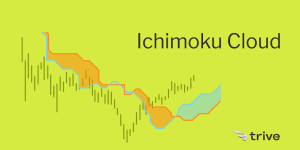Piece written by Tiaan van Aswegen, Trive Financial Market Analyst
In the ever-changing landscape of commodities that keep the global economic gears turning, there’s a heavyweight that reigns supreme: Crude oil, the unshakable cornerstone. It’s not just about getting us from point A to B; it’s the hidden force behind countless industries – from fertilizers to plastics, cosmetics to medicine. Brace yourself because the crude oil market is a behemoth, dwarfing the combined production value of the top 10 metals in 2022. With only a handful of countries pulling the strings in its production, this is where the big bucks flow.
How big is the Oil Market?
So, how big is the oil market really? In order to calculate the market size for a commodity, its latest price is multiplied by the global production, and in this case, the global output for the latest full year, 2022. An average of 80.75M barrels of oil were produced daily in 2022, taking the yearly production close to 29.5 Bn barrels. On these production values, the crude oil market reaches a mammoth $2.1T in size, far exceeding the $283.4M iron ore market, which is the largest metal market. In total, the top 10 metal markets in the world reach a combined value of $967Bn, barely scraping half of the oil market’s value.
Why is the Oil Market so Big?
As previously mentioned, oil is the cornerstone of various industries, leading to a high level of demand. According to Statista, crude oil’s global demand amounted to 99.57M barrels per day (bpd) in 2022, with expectations of 101.89M bpd of demand in 2023. Statista further reports the road sector to be the largest oil consumer worldwide, accounting for over 33% of the global oil demand. According to OPEC, global oil product demand could reach 109.8M bpd in 2045, with diesel and gasoil demand accounting for 30.1M bpd and gasoline demand potentially reaching 27.6M bpd.
Is the Size of the Market Sustainable?
Due to the cartel formed by the Organization of the Petroleum Exporting Countries (OPEC), the oil price is generally regulated by balancing the supply and demand environment in the market. During periods of high-interest rates and lower consumer spending, OPEC could protect the oil price from falling due to demand pressures by cutting back on supply. Similarly, when demand is high, OPEC could increase its production and exports to meet this demand at a higher price. Therefore, the oil price, and in return, the size of the oil market is somewhat protected from significant shifts in the market’s dynamics. However, the threat of external factors on the commodity’s demand could threaten the market size in the longer term. The world is currently shifting toward a more sustainable future, leaving fossil fuels behind. With the growing market for electric vehicles (EVs) and similar shifts in consumer preferences, the global oil demand could diminish over the next couple of years.
Resumen
With a market size of $2.1T, oil currently dominates the commodity realm due to the economy’s dependence on it for its everyday functions. While a few dominant countries control its production, the biggest threat to the market size lies in an external shock from a fundamental shift in consumer preferences toward a more sustainable future.
Sources: Visual Capitalist, Statista
This material is provided for informational purposes only and does not constitute financial, investment or other advice. No opinion contained in this material constitutes a recommendation by Trive Financial Services Malta Limited or its author as to any particular investment, transaction or investment strategy and should not be relied upon in making any investment decision. In particular, the information does not take into account the individual investment objectives or financial circumstances of the individual investor. Trive Financial Services Malta Limited shall not be liable for any loss, damage or injury arising from the use of this information. CFDs are complex instruments and come with a high risk of losing money rapidly due to leverage. 73% of retail investor accounts lose money when trading CFDs with Trive Financial Services Malta Limited. You should consider whether you understand how CFDs work and whether you can afford to take the high risk of losing your money.

